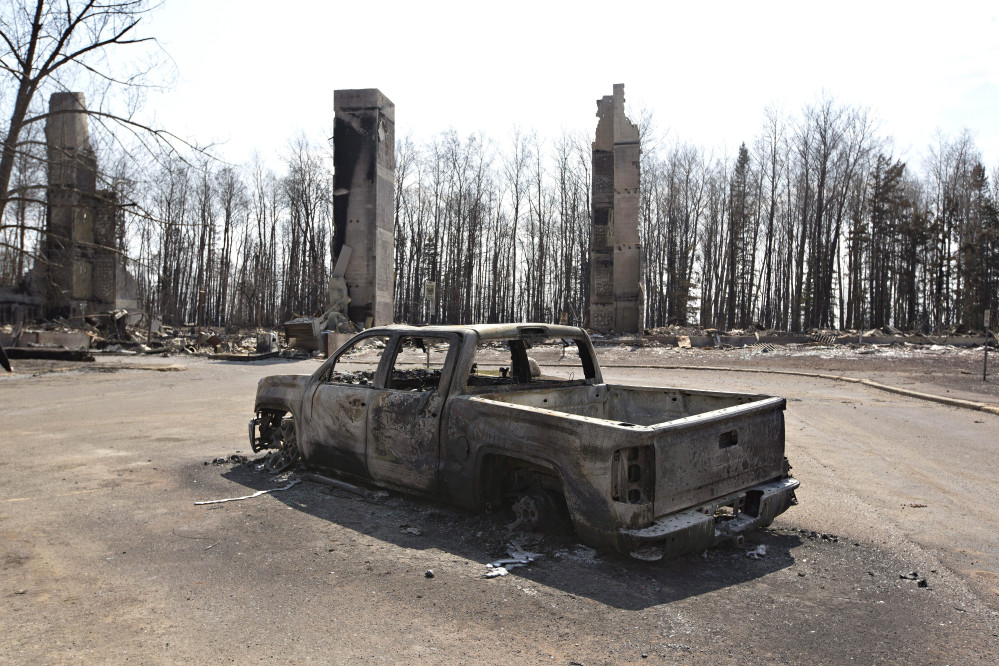FORT MCMURRAY, Alberta— A massive wildfire that destroyed parts of Canada’s oil sands capital hasn’t grown in size around Fort McMurray and the Alberta government is bringing in more firefighters to gain the upper hand, officials said Friday.
Alberta senior wildlife manager Chad Morrison said cooler temperatures, higher humidity and a rain forecast have enabled officials to put more firefighters in key points on the ground.
Morrison said the province plans to bring in 1,000 firefighters over the next two weeks, adding to 1,100 already there.
The blaze, which began May 1, is 1,930 square miles, which includes areas that are currently burning and those that have already burned, along with nearly three square miles in neighboring Saskatchewan.
Emergency management commissioner Duane McKay said there is no direct threat from the flames in Saskatchewan, in part because of the lake next to the nearest community and because fires in the region last year mean there’s less brush and trees to burn.
Officials hope to have the more than 80,000 evacuees return home starting June 1.
About 1,921 structures were destroyed in Fort McMurray, but 90 percent of the city remains intact, including essential infrastructure like the hospital, water treatment plant and the airport.
Morrison said so far the blaze has burned the same amount of forest as all fires consumed in Alberta last year.
Northern Alberta is the heartland of Canada’s oil sands industry and the effects of the enormous wildfire on the oil sector have prompted forecasters to trim their 2016 economic growth predictions for the country. The emergency forced nearby oil sands facilities to shut down.
The Alberta oil sands have the third-largest reserves of oil in the world. Its workers largely live in Fort McMurray, a former frontier outpost-turned-city whose residents come from all over Canada.
Send questions/comments to the editors.



Comments are no longer available on this story